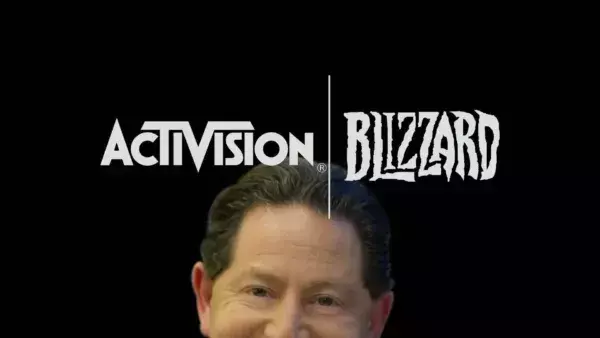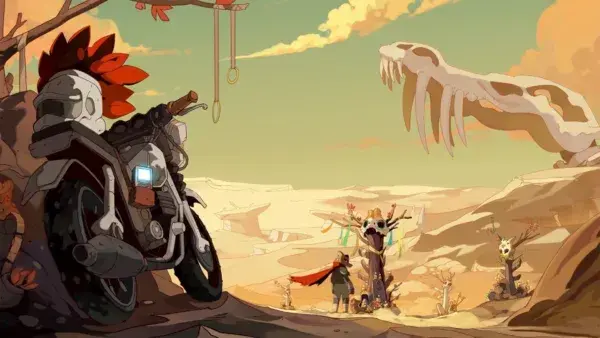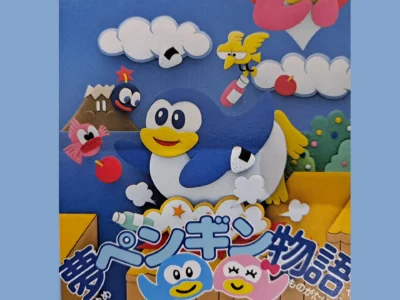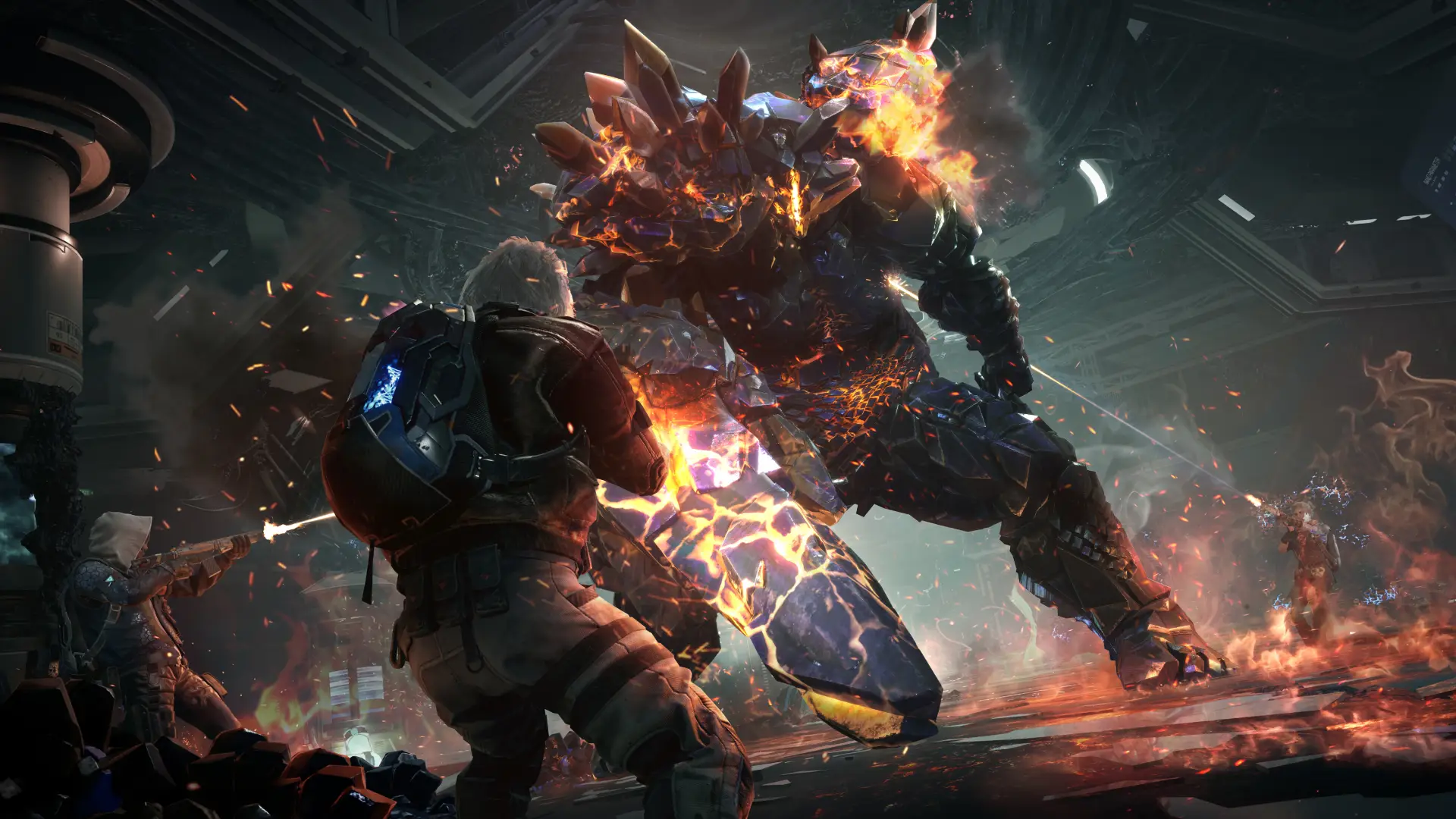
Can this free-to-play rogue-like looter shooter survive the merciless online shooter market? Alan goes hands-on with Synced…
The irony of the battle royale genre is that it’s spawned so many competitors that just launching a game in this space is itself a fight for survival. It’s become ever more important to offer new twists on the formula or to pivot into something else entirely. In the case of Synced, a title I first encountered four years ago at Gamescom, it’s really evolved away from the battle royale genre altogether into something more akin to a match-based form of The Division.
The premise of an apocalypse not brought about by biological pandemic or terrorism but by technological hubris remains intact. Synced is set in a near future where almost everyone has had nanotechnology implanted into their brains, and if that didn’t already raise a red flag, the corporation behind the tech is called Shinar, which you might forgive for sounding like a knock-off version of Shinra. Unsurprisingly, a cataclysmic event known as the Collapse happens: the nanotech malfunctions, taking over its users, thus turning humanity into robotic zombies referred to as Nanos.
In the midst of worldwide collapse, the game’s set in America’s Pacific Northwest now known as the Meridian, where humanity’s last stand against the machines has become focused. It’s also become a focal point for mining important resources to help in the war effort. I wouldn’t get too fixated on the specifics however, because to sum up in game terms, this is a looter shooter where you either go in alone or with a team of three players (or ‘runners’ in the game’s parlance) to defeat Nanos, stamp out further nano corruption referred to as the Surge, while also gathering resources and upgrading your abilities, some which carry over permanently as you progress and increase your power level, while others are temporary upgrades for a single run.
Playing through the opening tutorial as default runner Deadcut, it’s familiar third-person shooter stuff when it comes to moving, clambering, rolling, scavenging materials or ammo, or pinging markers or items for teammates. As someone who prefers to invert all axes in third-person, I was a bit annoyed that you can currently only invert y-axis, but FPS players will appreciate that you can toggle to aim down sights when shooting.
Where Synced sets itself apart is hinted at in its title. The initial grunt-level Nanos can be defeated easily, but I soon encounter a tankier Nano variant known as a Crusher, which requires unloading a lot more ammo into and dodging its charges before it goes down. Once downed however, my runner’s equipped with an armband that syncs with the Crusher, and suddenly it’s tamed and mine to command, and Deadcut even gives it a nickname: Ace.
You can see the appeal in having a big robo on your side to help thin the crowds and even the odds, and while you can ping them on targets to attack or select a spot on the map for them to guard, I also felt you could confidently leave them to fight by themselves. While dealing with a horde of Nanos, I felt comfortable letting Crusher handle enemies on the left while I focused on the right. And because they’re nanotech, you don’t have to keep them running alongside you; with the tap of a button you’ll absorb them into your armband device, ready to be summoned back out when needed. You can also swap them with another Nano you’ve already synced, with one taking the field at the time.
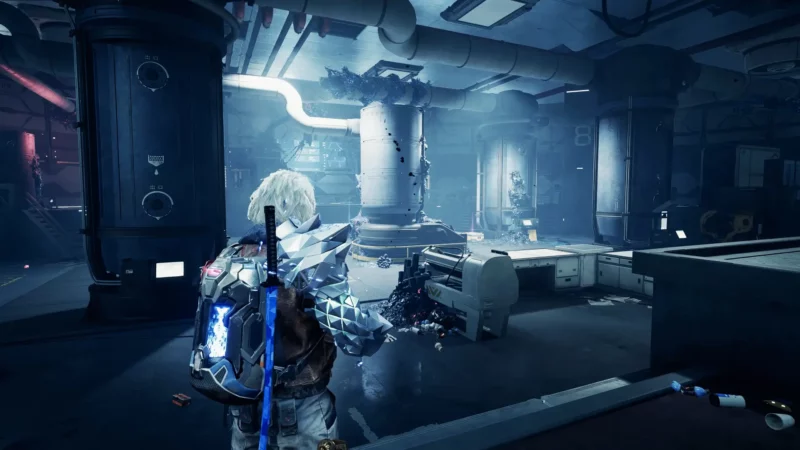
Credit: NExT Studios, Tencent.
During the hands-on, however, it didn’t feel that clear to me how exactly this syncing worked, as I only ever had one Nano per run. Back at the game’s hub, you can select the Nano you want to ‘equip’: there’s Guardian, who can drop a huge Reinhardt-style shield; Seer, who scans the environment for enemies and valuable loot; and Suppressor, who packs a lot of range-based firepower. You still have to fight a specific Nano once in a game and then sync with them in order to acquire them, which doesn’t make much sense why you need to pre-select in the first place, though it does make for a cool moment rushing into a downed Nano and then holding down the button for the whole syncing animation to complete.
The Nanos are such a highlight that I overlooked that each runner also has their own unique skills, such as Dr. Stone’s ability to heal allies, though we’re not talking completely different skill sets like a hero shooter. For the hands-on, it was more just to get a flavour of each different character, which while set in the Pacific Northwest, the runners’ backgrounds come from all parts of the globe (China is naturally represented since Synced is developed by Tencent’s NExT Studios), though another journalist observed Stone’s bio should be updated that he had previously worked for the NHS, given that he hails from the North of England. I did however regret picking one character who had a knack for repeatedly calling her Nano ‘darliiing’ for one of our games.
You can see the benefit of having a robo companion in solo games, but in a co-op PvE I’m not sure if it’s because there’s already more firepower but the Nano’s powers felt a bit more diluted, especially when you’re all plugging away at some spongey boss fights. Machines can do impressive things, but it’s more important to rely on team members, whether it’s someone more attentive with the mechanics or a fight to call out what and where you should be aiming, having someone revive you when you’re downed, or just having someone carry the team to the next checkpoint.
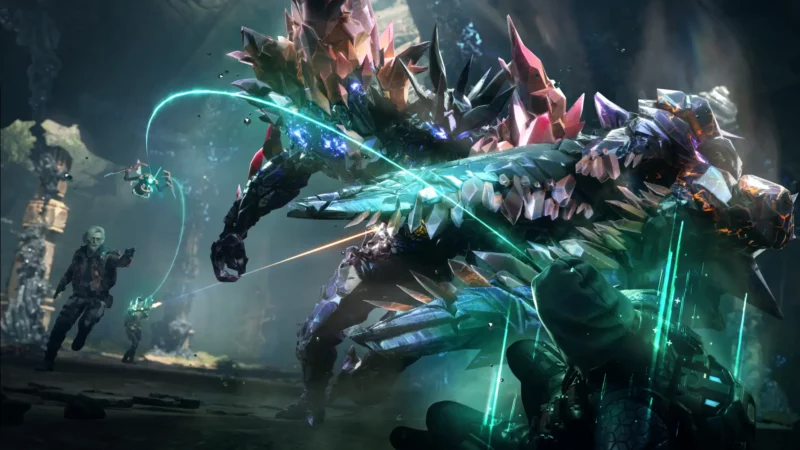
Credit: NExT Studios, Tencent.
PvE missions are split between levels in the Meridian that feel a bit more open, though you’re still following waypoints to eliminate Nanos and the Surge, which gradually increases over the course of the run, which in turn ups the challenge and intensity of Nanos. Others meanwhile take place in underground facilities, which feels a lot more like a dungeon crawl, as your squad moves from room to room taking out enemies, before facing a Tyrant Nano at the end. There’s also a wave-based horde mode I attempted solo that also turned out to be foolhardy endeavour, where I quickly discovered my power level was too low, resulting in me getting wiped before I could even survive the first wave.
Synced evidently has the premium look and feel that many free-to-play shooters now have. It’s enough to make us wonder whether players who are still willing to pay full price for a game like this are likely to become an endangered species. You can see the care and attention that’s been put into Synced’s world, whether it’s seeing NPCs busy with their own tasks rather than merely rooted to the spot as quest givers or vendors, or the nuggets of lore you may encounter on any given run.
There are some aspects of the game I’m still in the dark about, having not had the opportunity to test out the PvP component during my hands-on – this should have more of an impact on which type of Nanos your team decide to bring. Monetisation is still a mystery, save for a literal gacha machine that can be found at base, though the developers have said this will just be for cosmetics, designed to give each player different flavours like in a candy store (this probably isn’t the best comparison, given the addictive qualities of sugar).
You won’t have to wait too long to find out how you’ll fare in the techno-apocalypse, though, as Synced is slated to launch this summer.
Read more: The essential techniques for great multiplayer level design


